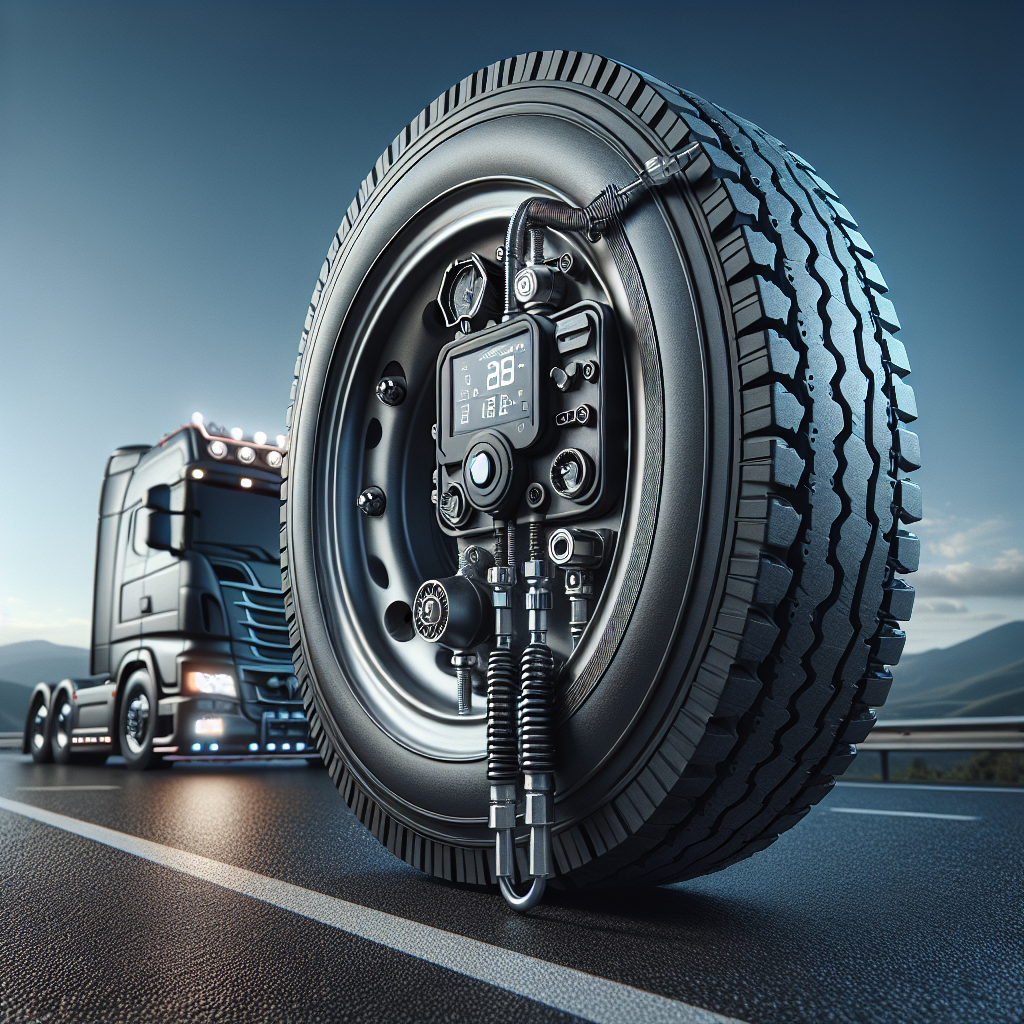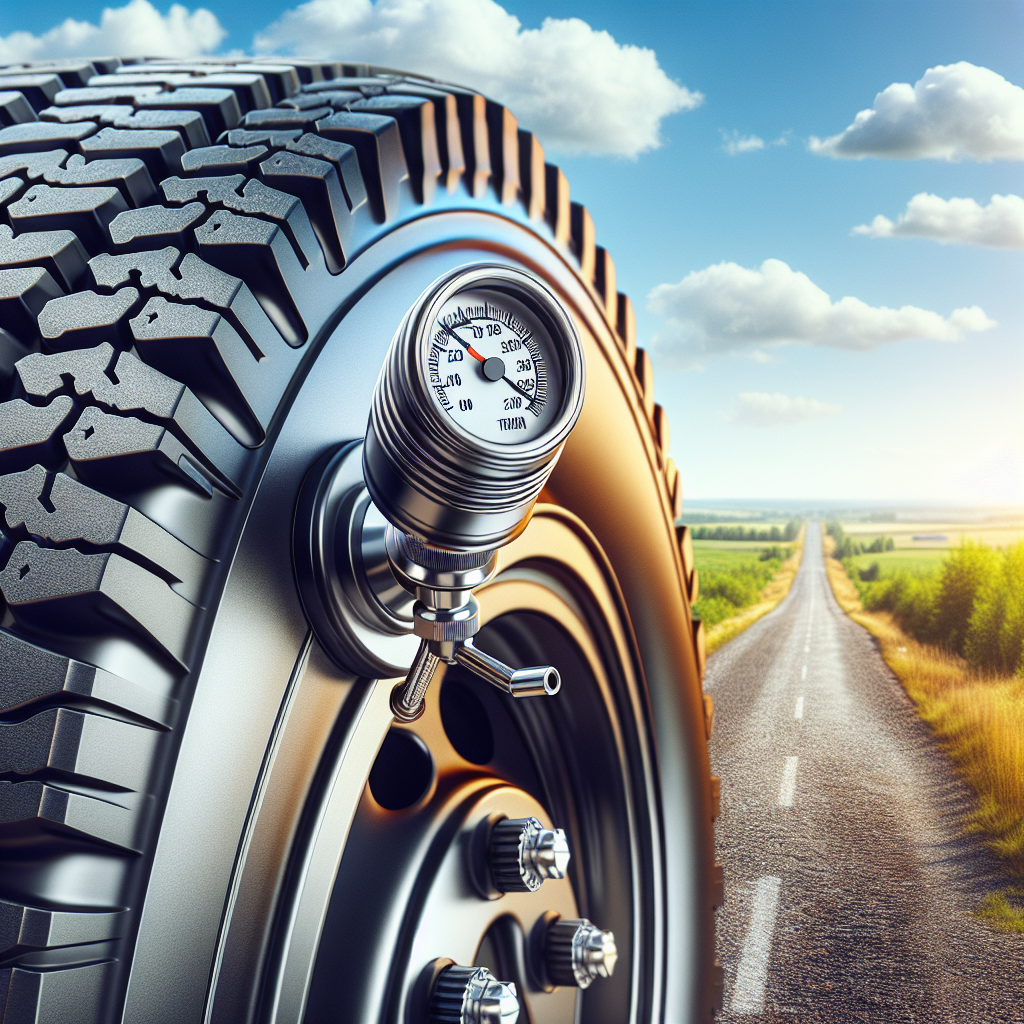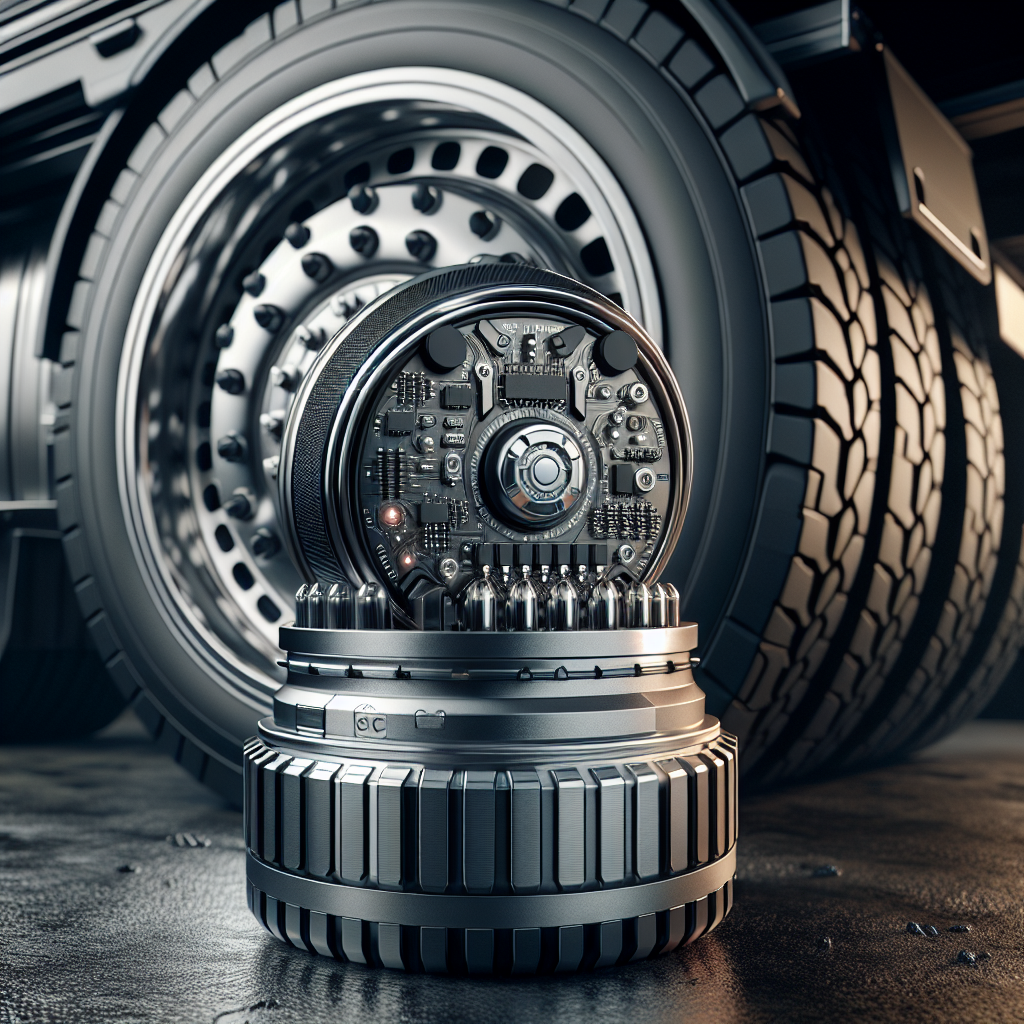Tire pressure sensors play a crucial role in ensuring the safety and efficiency of any vehicle, especially for trailers that bear heavy loads. Maintaining the correct tire pressure is essential not only for fuel efficiency but also for preventing tire blowouts and improving overall vehicle handling.
When tire pressure is too low, it can lead to increased friction, causing tires to overheat and potentially fail. Conversely, over-inflated tires can result in reduced traction and uneven tire wear. This is where tire pressure sensors come into play. They monitor the tire pressure in real-time and provide instant feedback to the driver, allowing for timely adjustments.
Moreover, having a reliable monitoring system can significantly reduce maintenance costs. By addressing tire pressure issues before they escalate into severe problems, vehicle owners can avoid the expenses associated with tire replacements and repairs, as well as the risks of accidents caused by tire failures.
For those looking to enhance their towing experience, understanding the importance of tire pressure sensors is a key step. Proper installation and monitoring can lead to safer journeys and peace of mind. Tow with peace of mind, knowing that trailerwatchdog is standing guard. Visit trailerwatchdog.com to learn more about how our trailer monitoring system can transform your trailer into a smart trailer!
Tools and Materials Needed for Installation
Before diving into the installation process, it's important to gather all the necessary tools and materials. Having everything on hand will streamline the installation of tire pressure sensors, making the entire process more efficient and straightforward.
Here is a list of essential tools and materials you will need:
- Tire Pressure Sensors: Choose compatible sensors designed specifically for your trailer's tire type.
- Torque Wrench: This tool ensures that the sensors are tightened to the correct specification, preventing leaks or damage.
- Valve Stem Tool: This is necessary for removing and installing the valve stems without damaging them.
- Flathead and Phillips Screwdrivers: These might be required for securing any components or covers during the installation.
- Wire Strippers and Connectors: If your sensors require wiring, these tools will help you make secure connections.
- Electrical Tape: Useful for securing and insulating any exposed wires.
- Sealant or Gasket Maker (optional): This can be used to ensure a leak-proof seal around the sensor installation.
Gathering these tools and materials ahead of time will not only save you from potential interruptions during the installation process but will also enhance the overall effectiveness of your tire pressure monitoring system. By being prepared, you can focus more on the installation itself and less on searching for tools.
Step-by-Step Guide to Installing Tire Pressure Sensors

Installing tire pressure sensors might seem daunting, but with a clear step-by-step approach, it can be a manageable task. Follow this guide to ensure proper installation and optimal functionality of your monitoring system.
- Prepare the Tires: Start by ensuring the tires are properly inflated and cool. This will help in accurately reading the tire pressure and prevent any accidents during installation.
- Remove Valve Caps: Using your hands or a valve stem tool, carefully remove the valve caps from each tire where the sensors will be installed.
- Install the Sensors: Take the tire pressure sensor and, using the valve stem tool, screw it onto the valve stem of the tire. Ensure it is tightened securely but avoid over-tightening which can cause damage.
- Check for Leaks: After installing the sensors, apply soapy water to the valve area. If bubbles form, it indicates a leak that needs to be addressed.
- Connect the Monitoring System: If your sensors require a wireless connection, follow the manufacturer’s instructions to link the sensors to your monitoring system. This step may involve downloading an app or using a display unit.
- Test the System: Before hitting the road, ensure that the sensors are transmitting data correctly. Check the readings on your monitoring system to confirm that everything is functioning as expected.
- Replace Valve Caps: Once you’ve verified that the installation is successful, replace the valve caps on each tire to protect the sensors.
By following these steps, you can efficiently install tire pressure sensors and enhance your trailer's safety and performance. Taking the time to do it right will pay off in the long run, providing peace of mind while towing.
Common Mistakes When Installing Tire Pressure Sensors

While installing tire pressure sensors can improve safety and efficiency, there are several common mistakes that can hinder their effectiveness. Avoiding these pitfalls will ensure a smoother installation process and better performance of your monitoring system.
- Neglecting to Read Instructions: Each tire pressure sensor comes with specific installation guidelines. Skipping this step can lead to improper installation, resulting in faulty readings or sensor failure.
- Inadequate Tire Preparation: Installing sensors on hot or improperly inflated tires can cause inaccurate pressure readings. Always ensure that your tires are cool and correctly inflated before beginning the installation.
- Over-tightening Sensors: While it’s important to secure the sensors, over-tightening can damage the valve stem or the sensor itself, leading to leaks or malfunction. Use a gentle hand when securing the sensors.
- Ignoring Compatibility: Make sure that the sensors you are installing are compatible with your trailer’s monitoring system. Using incompatible sensors can lead to communication issues and unreliable data.
- Failing to Test the System: After installation, neglecting to test the sensors can lead to undetected issues. Always check that the sensors are working correctly and transmitting data before hitting the road.
- Not Keeping Spare Parts: Some users overlook the importance of having spare sensors or valve stems. If a sensor fails, having replacements on hand can prevent delays and ensure continuous monitoring.
By being aware of these common mistakes, you can take proactive measures to ensure a successful installation of your tire pressure sensors, leading to enhanced safety and efficiency on your journeys.
Testing and Calibrating Your Tire Pressure Sensors

Once you have successfully installed your tire pressure sensors, it’s crucial to test and calibrate them for optimal performance. Proper testing and calibration ensure that your sensors provide accurate readings, which is vital for maintaining vehicle safety and performance.
Here’s a step-by-step guide to effectively test and calibrate your tire pressure sensors:
- Initial System Check: Before you begin testing, ensure that all sensors are securely attached and that there are no visible damages. Turn on your trailer's monitoring system and verify that the sensors are recognized.
- Pressure Verification: Use a reliable tire pressure gauge to manually check the pressure in each tire. Compare these readings to those displayed by the sensors. Discrepancies may indicate the need for recalibration.
- Calibrate Sensors: If any sensor readings are off, follow the manufacturer's instructions for recalibrating the affected sensors. This often involves resetting the sensor or adjusting the settings on your monitoring system.
- Dynamic Testing: After calibration, take your trailer for a short drive. Monitor the real-time pressure readings during the drive. Ensure that the readings adjust correctly based on fluctuations in speed and load.
- Final Verification: After the test drive, re-check the tire pressures with a gauge. Make sure the readings from the sensors now match your manual checks. If they do not align, further calibration may be necessary.
Regular testing and calibration of your tire pressure sensors are essential to ensure they function correctly and provide reliable data. This proactive approach not only enhances the safety of your trailer but also prolongs the lifespan of your tires.
Maintaining Your Tire Pressure Sensor System

To ensure the longevity and reliability of your tire pressure sensor system, it is vital to engage in regular maintenance. Proper maintenance not only enhances the performance of your sensors but also contributes to overall vehicle safety and efficiency.
Here are some essential maintenance tips to keep your tire pressure sensor system in top shape:
- Regular Inspections: Frequently check the physical condition of the sensors. Look for any signs of wear, damage, or corrosion. Ensure that all connections are secure and that there are no leaks in the sensor valves.
- Battery Checks: Many tire pressure sensors are powered by batteries. Regularly check the battery status and replace them as needed to avoid sensor failures.
- Software Updates: If your sensor system is connected to a monitoring app or software, ensure it is updated regularly. Updates can improve functionality and security.
- Calibration Schedule: Establish a routine for recalibrating your sensors, especially after significant changes in tire pressure or when switching tires. This practice ensures accurate readings at all times.
- Professional Servicing: Consider having your tire pressure sensor system professionally inspected during routine vehicle maintenance. Experts can identify potential issues that may not be visible to the untrained eye.
By following these maintenance tips, you can prolong the life of your tire pressure sensor system and ensure that it operates efficiently. Regular upkeep will help you avoid costly repairs and enhance your overall towing experience. Tow with peace of mind, knowing that TrailerWatchdog is standing guard. Visit trailerwatchdog.com for more information on keeping your trailer safe and smart.

